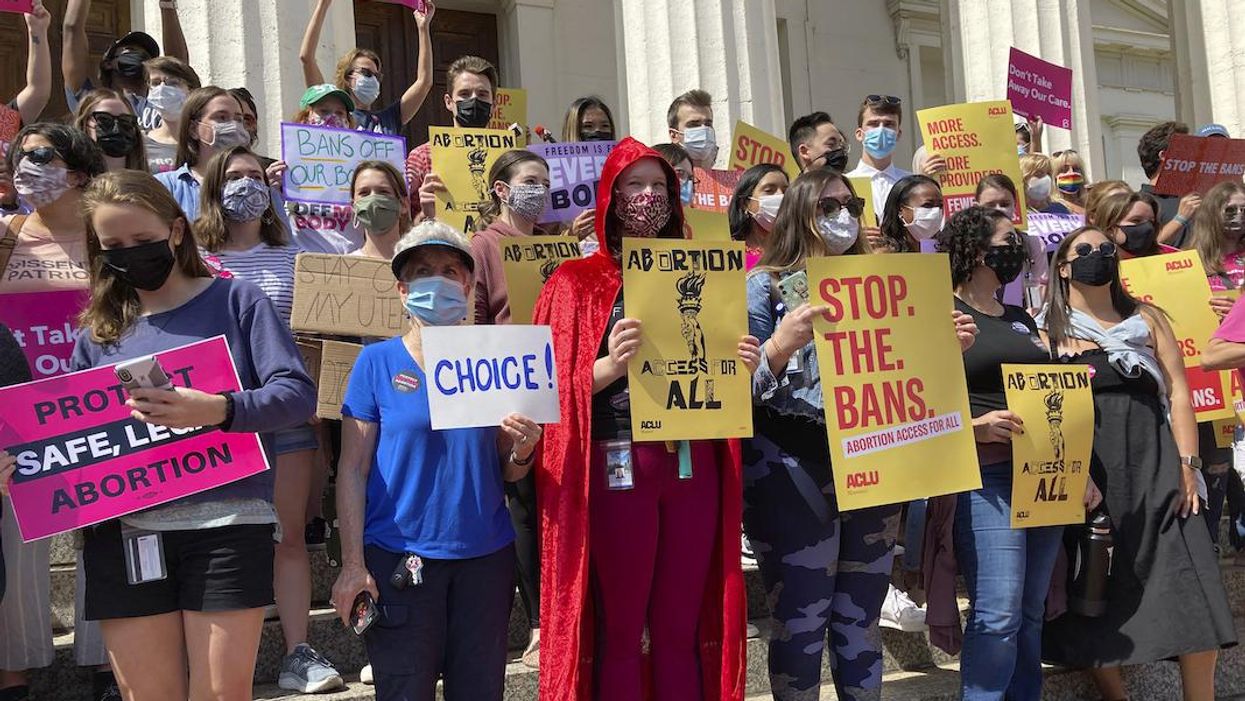Protests across the country, throngs of activists at state capitals, and a Supreme Court cordoned off by high fencing have created a new political landscape that Democrats must carefully traverse. The historic leak of Supreme Court Justice Samuel Alito’s initial draft opinion to overturn Roe v. Wade has returned abortion rights to the front of the political landscape.
Despite narrow Democratic majorities in the House and Senate, President Joe Biden acknowledged that his party did not have enough votes to codify Roe v. Wade in law. On the campaign trail in 2019, Biden promised to turn Roe into law, and women's rights activists and Democratic voters have been calling on him to fulfill his promise.
Many Democratic voters have expressed disappointment with the Democratic Party and the Biden Administration’s difficulty in keeping the party line. Democratic Senators Joe Manchin and Kyrsten Sinema have routinely held up Democratic legislation and said they will not change filibuster rules, a necessity if the Democrats were to try to pass legislation that would codify abortion rights on the federal level. Biden’s approval ratings have hovered around 42 percent, a level roughly equal to President Trump at the same time in his first term.
However, many Democrats view the anger in the streets as a potential boost for their party.
“Republicans are going to be in a very tough place right now. They have to defend something that Republicans said would never happen,” said Democratic Sen. Ben Ray Luján of New Mexico.
Democratic Strategy
For midterm elections, the biggest worry for Democrats is voter turnout. A key demographic for Democratic success is younger voters, a group particularly keen to protect abortion rights. In recent weeks, Democratic strategists and pollsters have openly worried about President Biden’s and the party’s decreasing support among young voters.
According to the latest NPR/PBS NewsHour/Marist National poll, Biden’s approval rating among young people dropped by a dramatic 16 points down to 37 percent, the lowest of any age group. Contributing factors include economic conditions and slow movement on the President’s promise to forgive student loan debt.
At protests across the country, young people feature prominently in the fight to protect abortion rights. The general anger toward the Supreme Court and political system is broad, with the Democrats not escaping unscathed.
Without a drastic departure from the Biden Administration and Democratic leadership’s previous political strategy, the Democrats have limited options to counter the power of the Supreme. In part for that reason, many voters have expressed their anger at the Democratic Party’s lack of action.
What’s Next?
The Democratic Party’s strategy seems to be doubling down on the 2020 electoral strategy, focusing on the danger posed by their right-wing opponents.
In response to the leaked Supreme Court opinion, President Biden said, “if the rationale of the decision as released were to be sustained, a whole range of rights are in question. And the idea that we're letting the states make those decisions would be a fundamental shift in what we've done.”
Alito’s draft opinion makes reference to other rights, including same-sex marriage, leading to worries that conservative judges would target such issues. Said Biden, "a lot more than abortion" is at stake in future elections.
But this could be a risky strategy considering that many young voters and activists are demanding action now.
For the Democrats, the midterms will come down to how well they turn out their voters. The most recent attack on abortion rights will either catalyze youth turnout or reinforce the opinion of more apathetic voters.












Trump Cabinet Nominee Withdraws Over (Sane) January 6 Comments